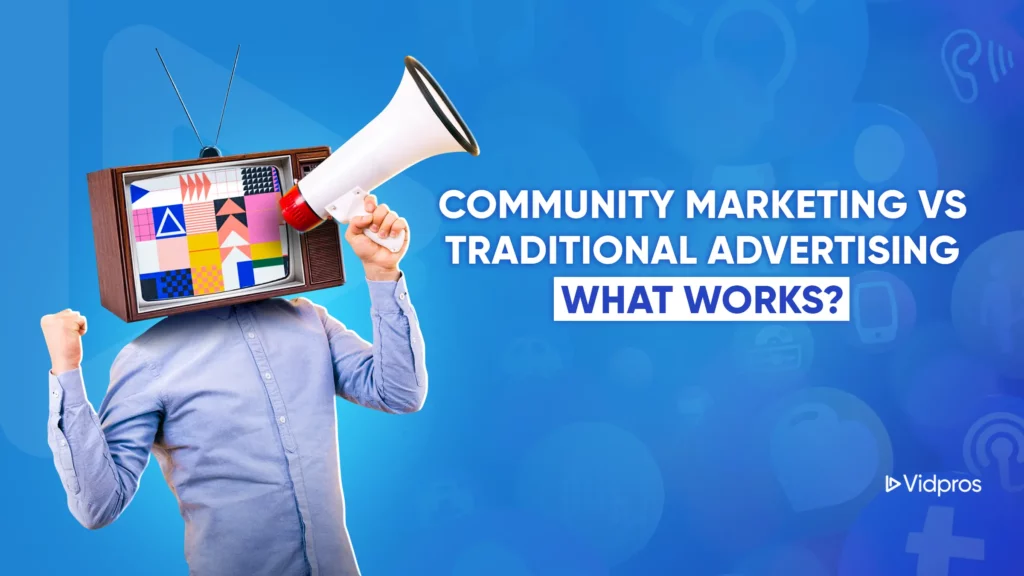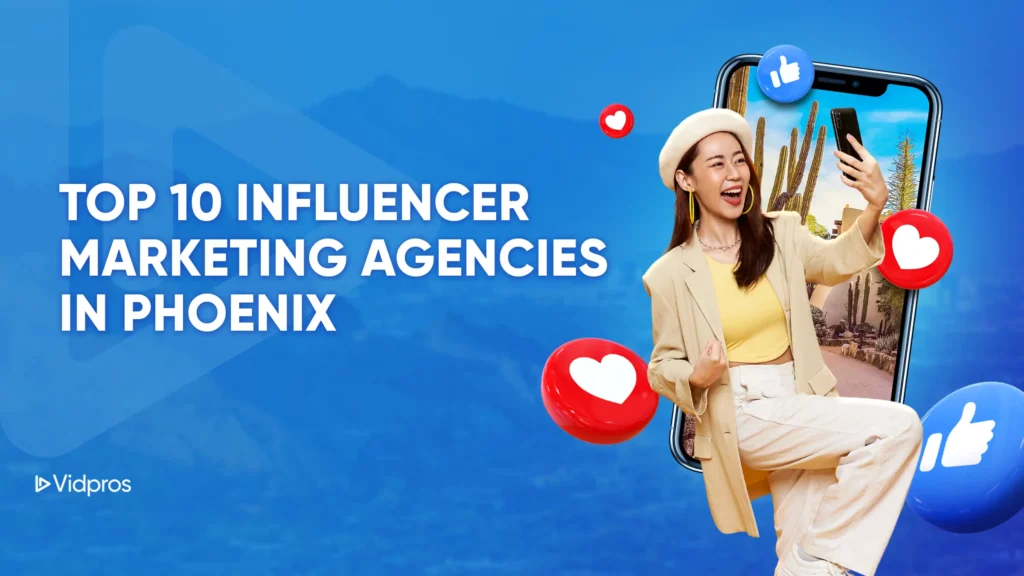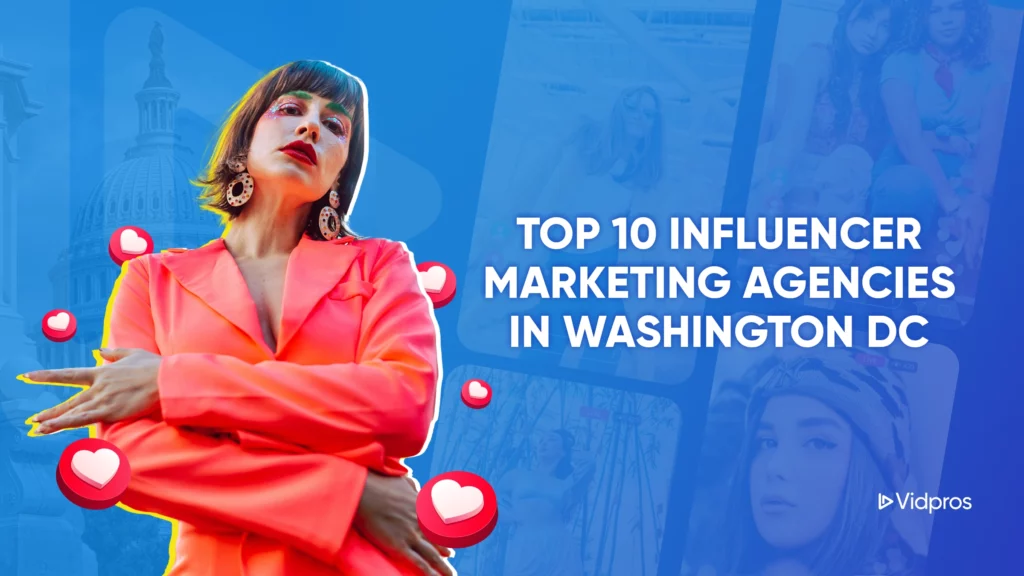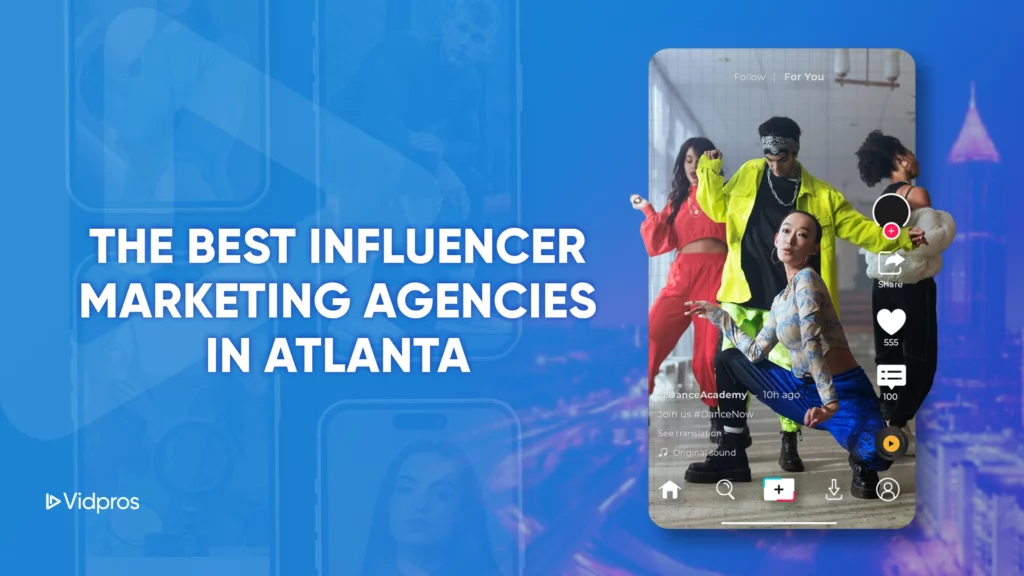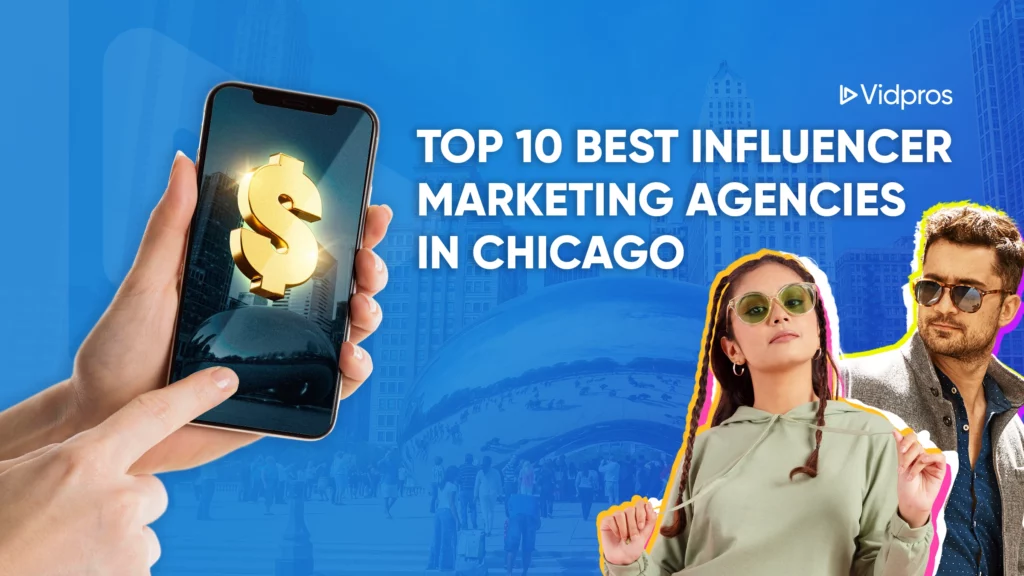Marketing has come a long way since the early days of digital advertising. What started as simple banner ads in the 1990s has transformed into a sophisticated ecosystem of data-driven strategies. With the rise of search engines like Google and the explosion of social media platforms, brands now have unique access to customers.
Today, marketing is more dynamic, powered by AI and augmented reality technologies that create personalized experiences for every user. This evolution highlights the importance of a community marketing strategy, which focuses on nurturing customer loyalty and engagement through connection, content, and consistency.
The Evolution of Modern Marketing
The numbers tell a compelling story if you’re wondering just how important video has become in modern marketing. An impressive 91% of businesses have embraced video marketing, recognizing its power to engage audiences effectively. Moreover, 85% of marketers plan to increase their video budgets this year. Video now makes up 65% of all global internet traffic– a clear sign of how central it’s become to consuming content online.
The current marketing looks drastically different from even a few years ago. Customers now expect personalized experiences tailored to their interests and behaviors. Social media platforms have evolved into virtual shopping malls, creating seamless paths from discovery to purchase. More importantly, consumers are choosing toward authentic, engaging content rather than traditional advertising approaches.
Multimedia content isn’t just convenient anymore, it’s essential for connecting with modern audiences. Brands must create diverse content types to stay relevant and maintain meaningful connections with their target markets. The focus has shifted from purely promotional messages to creating valuable, engaging experiences that resonate personally, emphasizing the importance of community marketing strategies.
Understanding Traditional Marketing Methods

Traditional advertising encompasses all those offline promotional methods we’ve known and used before the digital age took over. Think of it as reaching broad audiences through established channels and physical media. While digital marketing might be the new kid on the block, it still cuts, especially when trying to reach specific demographics or local markets.
Examples of Traditional Advertising
Let’s break down the main types and why they still matter:
Television Commercials and Branded Video Content
TV advertising combines visual and audio elements to create emotional connections with viewers. Through compelling storytelling and high-quality production, these commercials can leave lasting impressions, reaching people in their living rooms.
Print Media
Newspapers, magazines, and billboards each serve unique purposes in advertising. Want to target specific reader demographics? Magazines and newspapers have got you covered. Need to catch eyes in high-traffic areas? That’s where billboards shine. There’s something about the tangible nature of print that lends credibility to your message.
Radio Advertisements
Radio might be audio-only, but that’s where creativity comes in. Effectively using sound, music, and voice can create memorable messages that stick with listeners, especially during their daily commutes.
Direct Mail Campaigns
Sometimes, getting physical mail still makes the most significant impact. Direct mail lets you put your message right in potential customer’s hands, with the ability to personalize content for different audience segments.
Trade Shows and Events
Nothing beats face-to-face interaction for building relationships. Trade shows allow you to demonstrate products, get immediate feedback, and connect with potential customers in person.
Advantages of Traditional Marketing
Traditional marketing comes with some serious perks that are worth considering for your strategy:
Broad Reach and Mass Market Appeal
Traditional channels excel at reaching broad audiences across different demographics. If you’re a local business trying to establish a community presence, TV commercials, and billboards can help you effectively communicate with diverse geographic locations and consumer segments.
Tangibility and Physical Presence
There’s something powerful about holding a brochure or piece of direct mail in your hands. These tangible items let people revisit your information at leisure, often creating stronger brand connections through physical engagement.
Established Metrics for Measuring Success
While different from digital analytics, traditional marketing has well-tested ways to measure success. You can track campaign effectiveness through reach, frequency, and sales performance during specific advertising periods.
What is Community Marketing?

If you’re looking to build deeper connections with your audience, community marketing is the answer. Unlike old-fashioned advertising, which broadcasts messages to the masses, community marketing focuses on creating genuine relationships with groups who share common interests in your brand. This approach often involves building strong brand communities that nurture deep connections between customers and brands.
Community marketing has evolved significantly over the years. Initially, it was about creating spaces for customers to interact with each other and the brand.
Today, customers are increasingly joining branded communities that reflect their values and interests. This shift highlights the importance of these communities for nurturing connections among consumers.
In post-pandemic, businesses are moving away from classic advertising methods and adopting a community based marketing strategy to meet consumer demands for genuine engagement.
Building Blocks of Community Marketing
The key to success of community marketing lies in its authenticity.
Instead of pushing sales messages, you’re nurturing conversations and creating spaces where customers can connect with your brand and each other. Community events play a crucial role in engaging local audiences and building brand loyalty. Think of it as building a tribe where members share values, experiences, and enthusiasm for what you offer.
User-Generated Content: Your Marketing Goldmine
One of the most potent aspects of community marketing is user-generated content. When your customers share reviews, testimonials, and social media posts about your brand, they create authentic marketing materials that carry more weight than regular advertising. Why? Because people trust recommendations from their peers far more than they trust promotional messages.
Video and Media: Creating Authentic Connections
Video content has become a game-changer in community marketing. It lets you share customer stories, tutorials, and behind-the-scenes glimpses that make your brand more relatable and approachable.
While creating video content might seem daunting, services like Vidpros help content creators streamline their production process. They handle the time-consuming editing work, allowing you to focus on creating authentic stories that resonate with your audience. Combine professionally edited videos with blogs and podcasts, and you have a media mix that keeps your community engaged and coming back for more.
Whether creating customer testimonials, product demonstrations, or lifestyle content, having a reliable video editing partner ensures your content maintains the professional quality your audience expects.
How Brands Build Thriving Communities

Building a thriving community isn’t something that happens overnight. It takes careful planning and consistent community marketing efforts. Here’s what you need to focus on:
-
Identify your target audience based on demographics and interests.
-
Provide valuable content and resources that keep them engaged.
-
Create opportunities for interaction through events and forums, ensuring every community member feels valued and connected.
-
Listen actively to community feedback and adapt accordingly.
Digital Tools for Community Building
Today’s digital platforms make building and maintaining engaged communities more straightforward. Social media platforms let you connect directly with your audience, while online forums create spaces for focused discussions. Add content creation tools for video sharing and email marketing for regular communication; you’ve got everything you need to keep your community thriving.
Real-World Community Marketing Examples

Let’s look at how some brands are crushing it with community marketing. Building a strong brand community through community-based marketing strategies can build long-term relationships and advocacy among members.
Social Media Community Engagement That Works
Take Lego, for example. Their Lego Ideas platform isn’t just another social media channel– it’s a vibrant community where fans can submit and vote on new set designs. By letting customers participate in product development, they’ve created a community of enthusiasts who feel personally invested in the brand’s success.
Brand Ambassadors Done Right
Frugi, a sustainable children’s clothing brand, shows us how to run an ambassador program that works. Their Frugi Family initiative encourages customers to share personal stories and refer friends, creating a natural system for brand advocacy that strengthens community bonds.
Forums That Build Connection
Want to see technical community building at its finest? Check out Visa’s Developer Community. They’ve created a space where developers can collaborate on payment technology challenges, turning technical support into a collaborative ecosystem.
Video Content That Inspires
GoPro has mastered the art of user-generated content by encouraging customers to share their adventure videos. This approach builds an inspiring community and provides authentic marketing material that shows their products in action.
Making the Right Choice for Your Business
So, how do you decide between traditional advertising and community marketing? Here’s what you need to consider:
-
Community marketing can significantly enhance customer loyalty by building trust and genuine relationships with your audience. Understanding your existing customers through demographic data, social media analytics, customer surveys, and direct feedback is crucial for tailoring your approach.
-
Identifying and targeting specific communities that are likely to yield loyal customers is essential. This focus ensures better lead quality and responsiveness. Moreover, implementing effective marketing strategies that emphasize long-term relationships and customer engagement can help gather valuable customer insights and adapt to community feedback.
-
A successful marketing strategy should integrate community-focused activities and engagement to build brand awareness, strengthen relationships, and achieve business objectives. By aligning social media efforts with your overall marketing strategy, you can ensure consistent messaging that resonates with your target market.
Budget Realities
Let’s talk about money.
Traditional advertising typically requires significant upfront investment in media buying and production. Community marketing might cost less in direct spending but needs consistent investment in relationship building and content creation. Your budget will help determine which approach or combination of techniques makes the most sense.
Know Your Audience
Understanding where your audience hangs out is crucial. Younger demographics are all over social media, while older audiences respond better to traditional channels. Pay attention to how your target market consumes information and meet them where they are.
Industry Matters
Different industries have different needs. Luxury brands lean heavily on traditional advertising to maintain their exclusive image, while tech companies might benefit from community engagement and digital interaction. Consider what’s typical in your industry, but don’t be afraid to break the mold if you see an opportunity.
The Best of Both Worlds
Who says you have to choose just one approach? Many successful brands combine traditional and community marketing to create comprehensive strategies. Use traditional advertising to build awareness while developing an online community for ongoing engagement. This balanced approach helps you achieve both immediate visibility and long-term relationship building.
Frequently Asked Questions
What is the difference between traditional marketing and marketing?
Think of traditional marketing as your classic advertising playbook– TV commercials, print ads, and radio spots. Modern marketing takes all that and adds digital channels, community building, and interactive engagement to the mix. While the tools have evolved, the core goal of connecting with your audience remains the same.
What do you mean by community marketing?
Community marketing is all about building relationships rather than just selling products. It’s creating spaces where customers can connect with your brand and each other, share experiences, and build loyalty through genuine engagement rather than promotional messages.
What’s the difference between content marketing and traditional advertising?
While traditional advertising focuses on promoting products directly, content marketing aims to provide value through helpful information and engaging stories. Conventional advertising is like a sales pitch, while content marketing is more like a useful conversation with your audience.
How does social marketing differ from traditional marketing?
Social marketing prioritizes community, focusing on building relationships through platforms where people already spend their time. Traditional marketing broadcasts messages to large audiences. While both have their place, social marketing creates more personal connections and ongoing engagement with your brand.
Capping off
The key to success in today’s marketing isn’t necessarily choosing between traditional advertising and community marketing– it’s understanding how to use each approach effectively to reach your specific goals. Depending on your audience, resources, and objectives, your strategy might lean heavily on one approach or strike a balance between both.
Remember that authenticity is the foundation of any successful marketing effort.
Whether creating a traditional TV commercial or a series of community-focused videos, your audience can tell when you’re genuinely invested in providing value. With the rise of video consumption, many businesses are finding success by partnering with professional video editing services like Vidpros to maintain high-quality content without straining their internal resources.
Today’s most successful marketers remain adaptable and responsive to their audience’s needs. They understand that while tools and platforms may change, the fundamental goal remains the same: creating meaningful connections. By focusing on delivering real value– whether through traditional channels, community engagement, or a thoughtful combination of both, you set your brand up for sustainable growth.
Ready to level up your video content strategy? Book a call with Vidpros today and discover how professional video editing can transform your marketing efforts.

